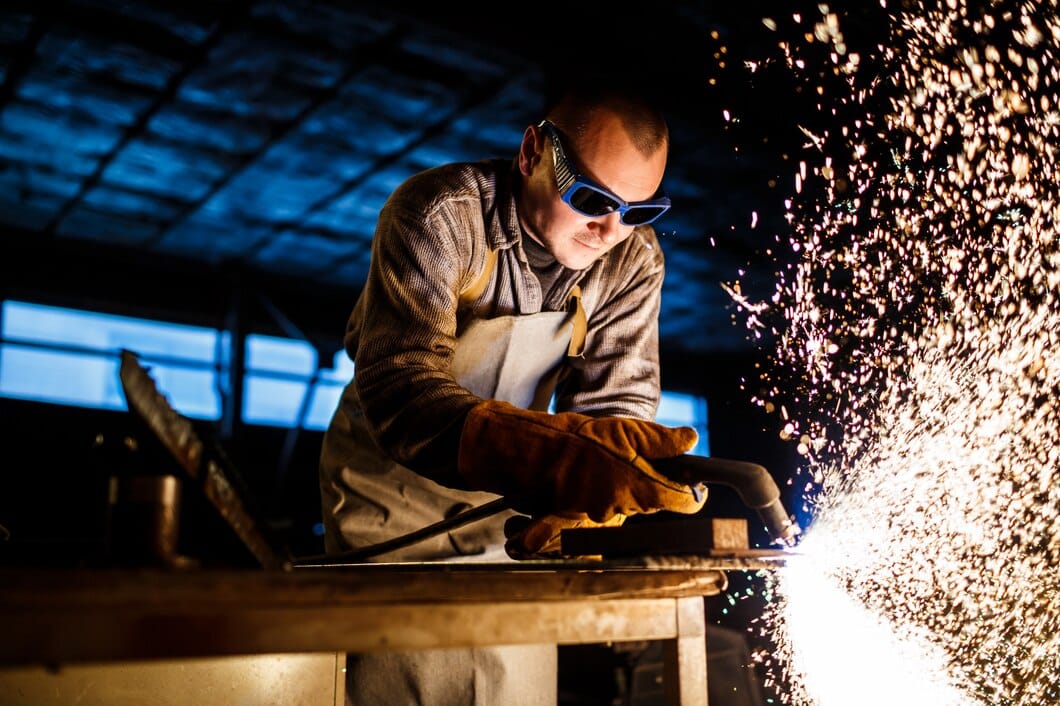Welding plays a vital role in metal fabrication, a process fundamental to building everything from bridges to small metal parts. At its core, welding joins metal pieces together through high heat, creating strong, durable bonds that can withstand immense stress and pressure. This makes welding an essential skill in the world of fabrication, where precision and strength are paramount.
In metal fabrication, different projects require different welding techniques to achieve the best results. The choice of technique depends on various factors, including the types of metal being used and the specific requirements of the project. Whether it’s creating intricate designs or ensuring structural integrity, welding is the backbone that holds the work together.
Ensuring high-quality welding is crucial because any weakness can compromise the entire structure. Rigorous quality checks, precise techniques, and experienced welders are necessary to meet high standards. Moreover, the variety of projects that benefit from welding is vast—each with its unique needs and advantages. By understanding the importance of welding in metal fabrication, you can appreciate the expertise and careful attention that goes into every project.
Understanding the Importance of Welding in Metal Fabrication
Welding is crucial in metal fabrication because it holds everything together. Picture a building or car without welded joints—pretty impossible, right? Welding is the process that joins metal parts so they stay connected under stress and over time. By applying intense heat, welders melt the edges of the metal pieces, fusing them together as they cool down. This creates a strong bond that can withstand heavy loads and high pressure.
Aside from strength, welding also offers flexibility in design. Welders can join metals at various angles, creating complex structures that would be difficult to achieve with other methods like bolting or riveting. This versatility makes welding an essential technique for creating everything from metal sculptures and furniture to industrial machinery and vehicle frames. Proper welding ensures that these creations are both durable and safe, which is why skilled welding is so important in any project.
Our Specialized Welding Techniques Explained
At TriPoint Fabrication, we use specialized welding techniques to achieve the best results. One common method we use is MIG welding, which involves feeding a continuous wire electrode through a welding gun. As the wire melts, it creates a strong, high-quality weld. MIG welding is especially useful for thicker materials and large-scale projects. It’s precise and efficient, making it a go-to method for many of our tasks.
Another technique we frequently employ is TIG welding. Unlike MIG welding, TIG welding uses a non-consumable tungsten electrode. This method is perfect for projects that require a high degree of precision, such as intricate metal designs or thin materials. TIG welding allows for more control and cleaner welds, though it does require a higher skill level to execute properly. Both of these techniques help us ensure that the welded joints are strong and reliable, tailored perfectly to the specific needs of each project.
How We Ensure High-Quality Welding on Every Project
Ensuring high-quality welding on every project is a priority for us. We start by using top-notch materials that meet industry standards. High-quality metal not only ensures a strong weld but also enhances the durability and longevity of the final product. Our team carefully selects the right type of metal for each specific job, taking into account the unique requirements of the project.
We also follow strict quality control measures throughout the welding process. Each weld is inspected to ensure it meets our high standards for precision and strength. We use advanced welding equipment and techniques to create perfect welds every time. Our skilled welders are trained in the latest methods and follow best practices to maintain the highest level of quality. This attention to detail guarantees that each project we complete is built to last.
Common Welding Projects and Their Benefits
Welding plays a crucial role in various projects, from small repairs to large construction jobs. Some common welding projects include building custom metal structures, fabricating parts for machinery, and repairing damaged metal components. Each of these projects benefits from the strength and durability that welding provides. Welded joints are often stronger than the original metal, making them ideal for repairs and construction.
Another benefit of welding is the ability to create custom designs. Whether you need a unique metal gate or a specialized tool, welding allows for precise fabrication of complex shapes and structures. This customization capability opens up endless possibilities for both functional and decorative projects. Welding also improves the overall safety and integrity of metal structures by providing strong and reliable joints, essential for any construction or repair job.
Conclusion
Understanding the basics of metal welding and different welding techniques can greatly improve your projects. Knowing how to ensure high-quality welding and recognizing the common applications can help you make informed decisions and achieve better results. Metal welding is a valuable skill that provides strength, customization, and durability to various projects, making it essential for many industries.
Now that you have a better understanding of metal welding, it’s time to transform your ideas into reality. If you need expert welding services, consider working with experienced professionals who can guarantee top-notch results.
At TriPoint Fabrication, we offer reliable and high-quality welding services tailored to meet your specific needs. Contact us today to learn more about how we can help with your next project and ensure it stands the test of time.


0 Comments